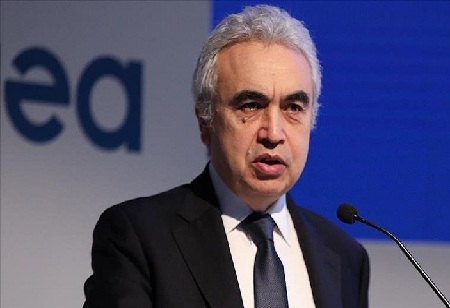India is among the countries that will drive the acceleration of the extraordinary increase in the deployment of renewables over the next five years. "We are entering a new and extraordinary growth phase of renewables," said International Energy Agency chief Fatih Birol. Driving this acceleration are concerns about energy security, economy, as well as climate change. The increased pace of renewable energy deployment will require investment to flow, particularly to emerging markets and developing economies. Birol said that India's G20 presidency will play an important role, especially as it takes over from another developing country Indonesia and will hand over in late 2023 to Brazil.
"It is a good opportunity for India to show case its recent successes," said Birol. The IEA chief said that India can demonstrate that a developing country can manage its clean energy transition but will require financial and technological support of advanced countries to move faster. Total renewable energy capacity, according to the International Energy Agency, is set to almost double in the next five years, overtaking natural gas and coal as the largest source of electricity generation. "Solar energy becomes the king of all electricity sources," stressed Birol. Over the next
five years (2022-27), global renewable power capacity is expected to grow by 2400 GW. "The world is expected to add as much renewable capacity in the next five years as it did in the last 20 years. Or to put it another way the world will add renewable energy capacity equal to the entire power generation capacity of China today," said Birol. The IEA chief said that this "extraordinary expansion" would be led by United States, China, European Union and India. Over the last few years, particularly due to the Covid pandemic, there has been a great deal of discussion on manufacturing, on whether solar manufacturing is focused on one single country, that is China. Birol pointed out that India will, thanks to government policies like production linked incentives, have an important role on reducing this concentration of manufacturing capacity in one country. "Today China's manufacturing capacity accounts for about 90% of global capacity. But as a result of big push from two countries, the United States and India, this 90% will be down to 75%. This mainly as a result of the Inflation Reduction Act in the United States and the Production Linked Incentives in India," said Birol.
Birol said that the data shows that the production linked incentives (PLI) scheme in India "attracts a lot of domestic and foreign investment" for PV manufacturing in India. "When I look at the India numbers, we expect that the manufacturing numbers will increase more than 10 times. Government policy will make India the second largest destination for PV manufacturing," said Birol.
The IEA chief says that the current energy crisis can be a historic turning point towards a cleaner and more secure future world energy system. The continued acceleration of renewables is critical to help keep the door open to limiting global warming to 1.5 °C. This multiple drivers of this "extraordinary growth" of renewable energy gives Birol the confidence to say that despite the difficulties it is too early to write the obituary of the 1.5 °C".
However, Birol points out that investment in clean energy has to increase exponentially. Current policies and efforts will result in investment of $2 trillion by 2030. "This needs to double to $4 trillion," said Birol. More importantly the bulk of the money must move to emerging markets and developing economies.
